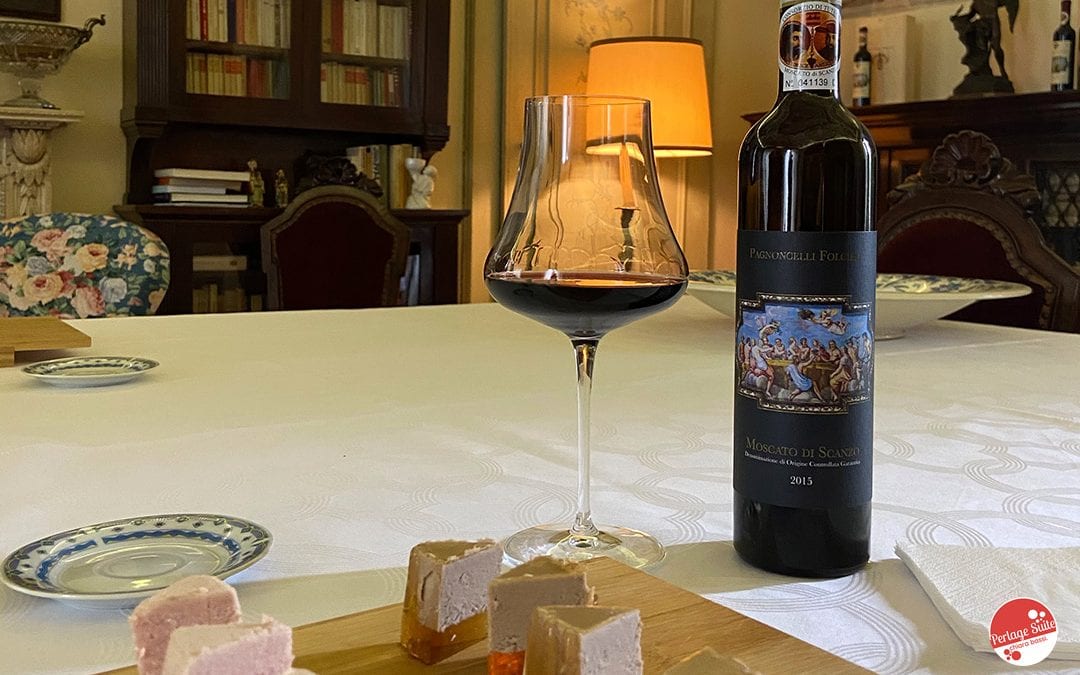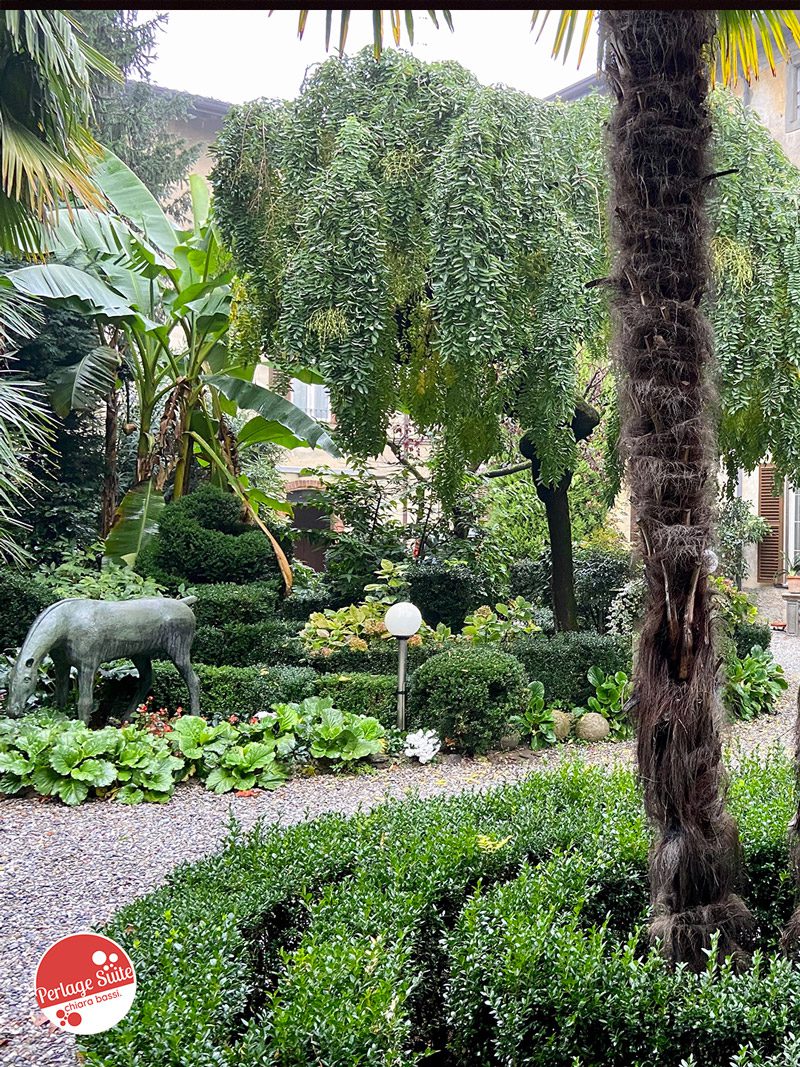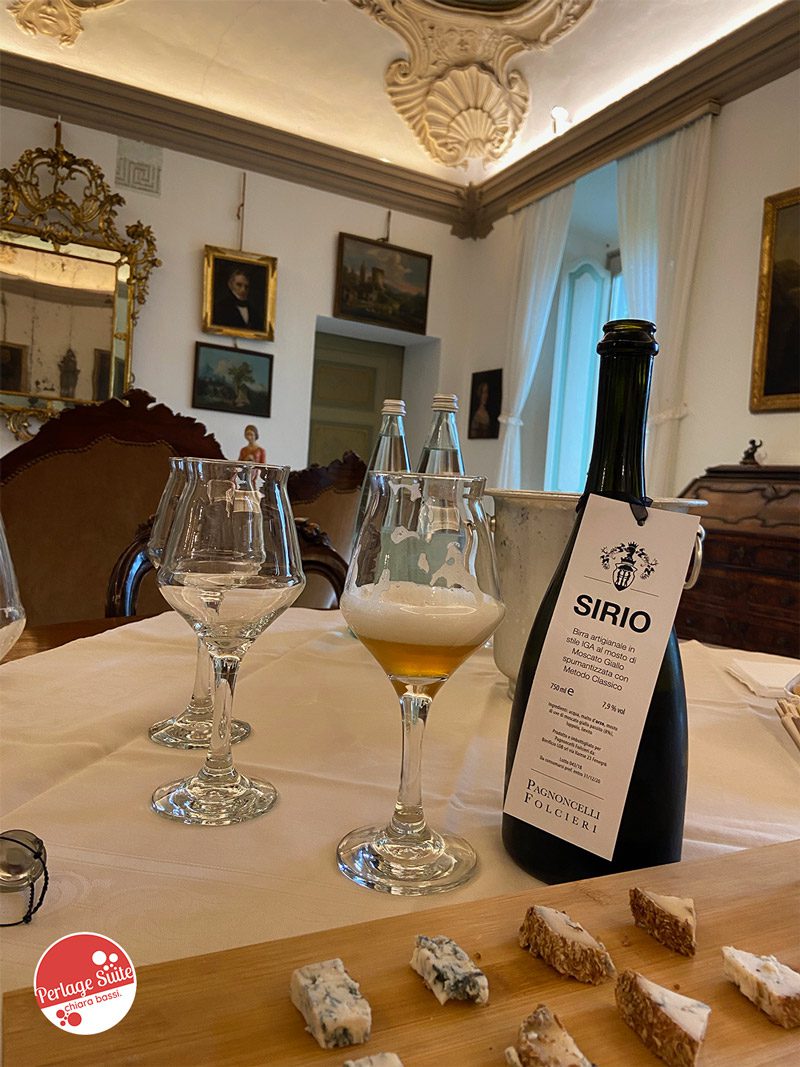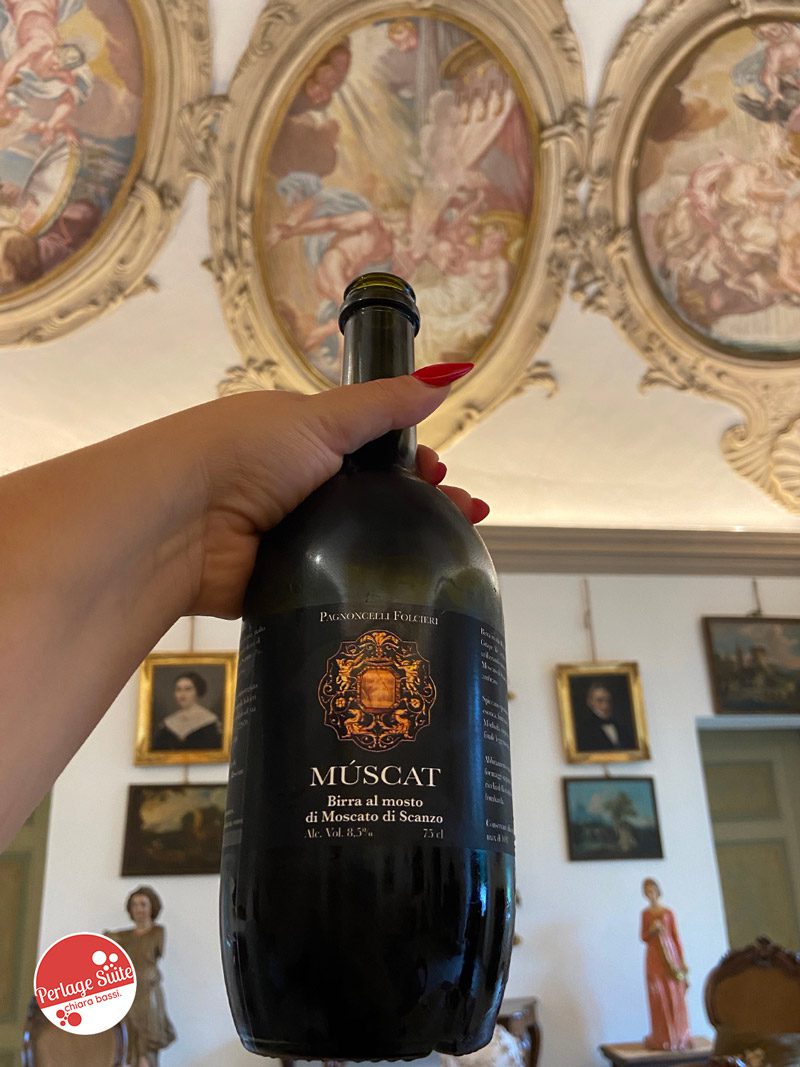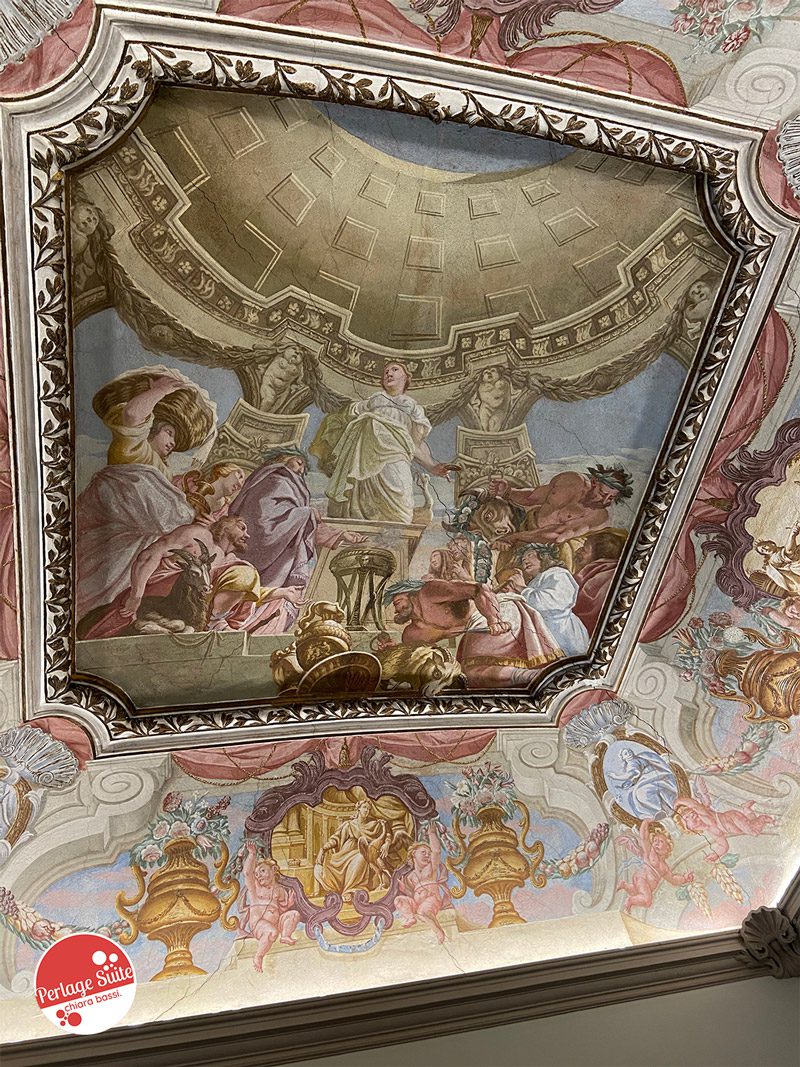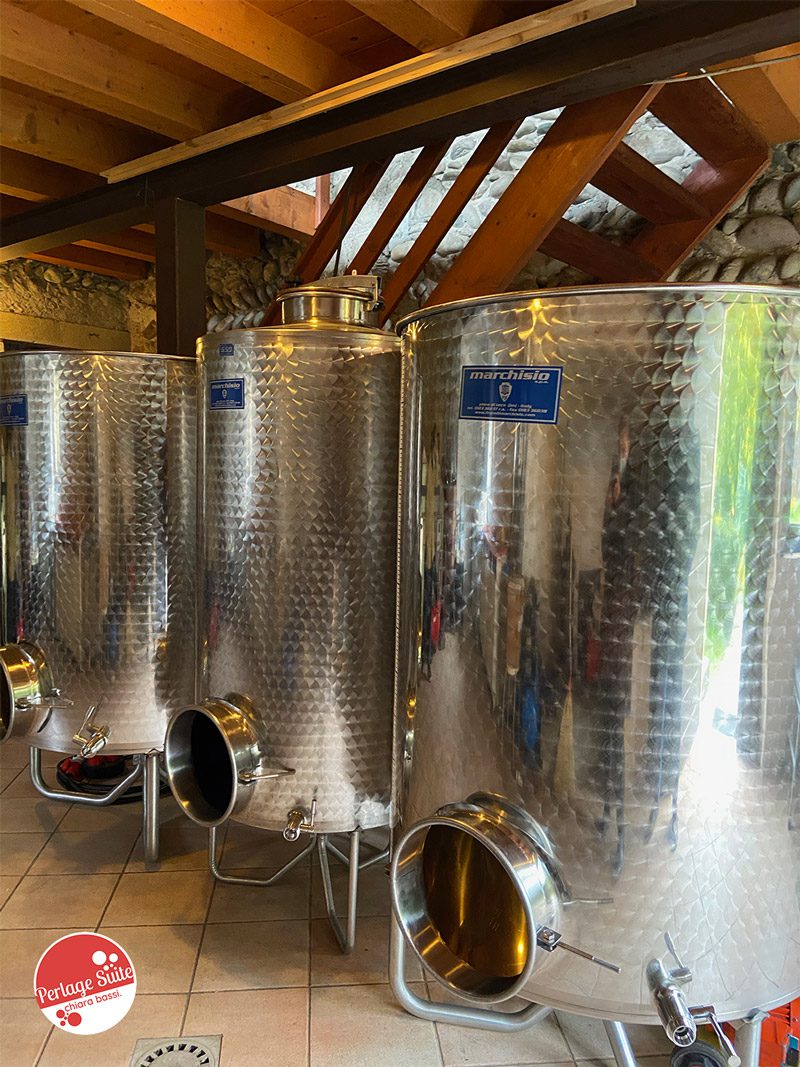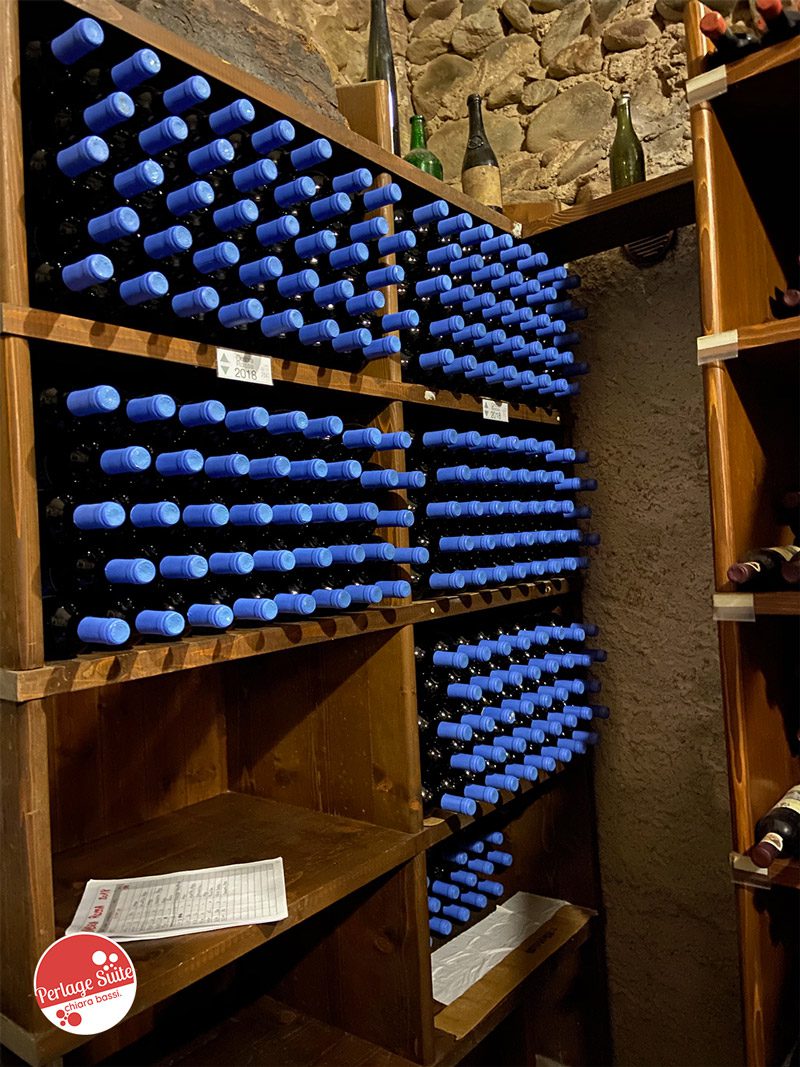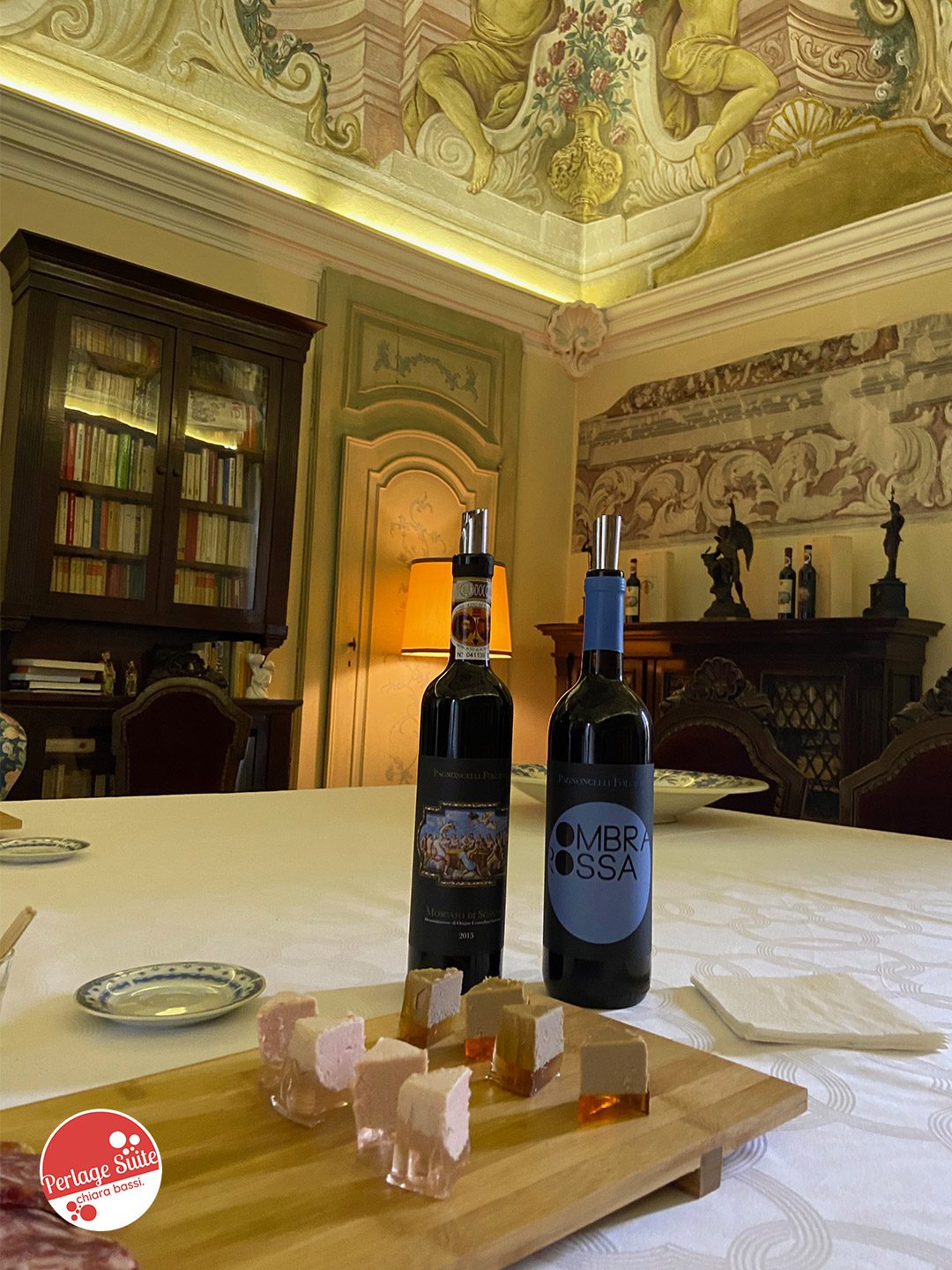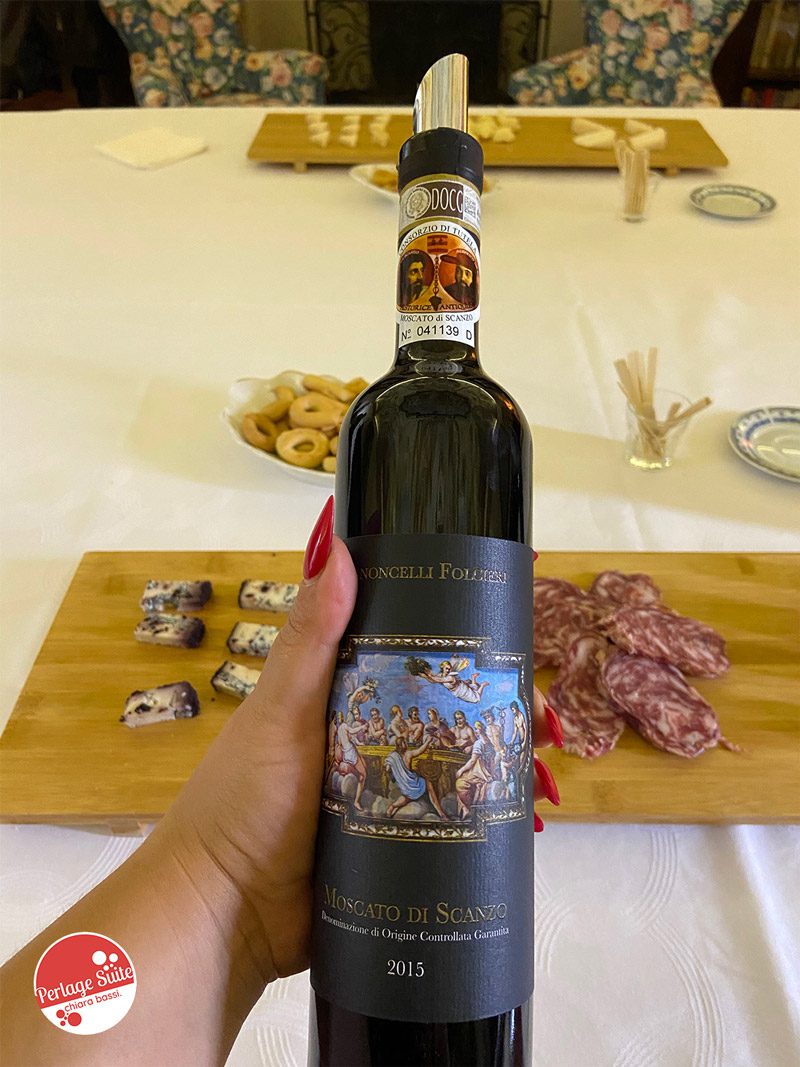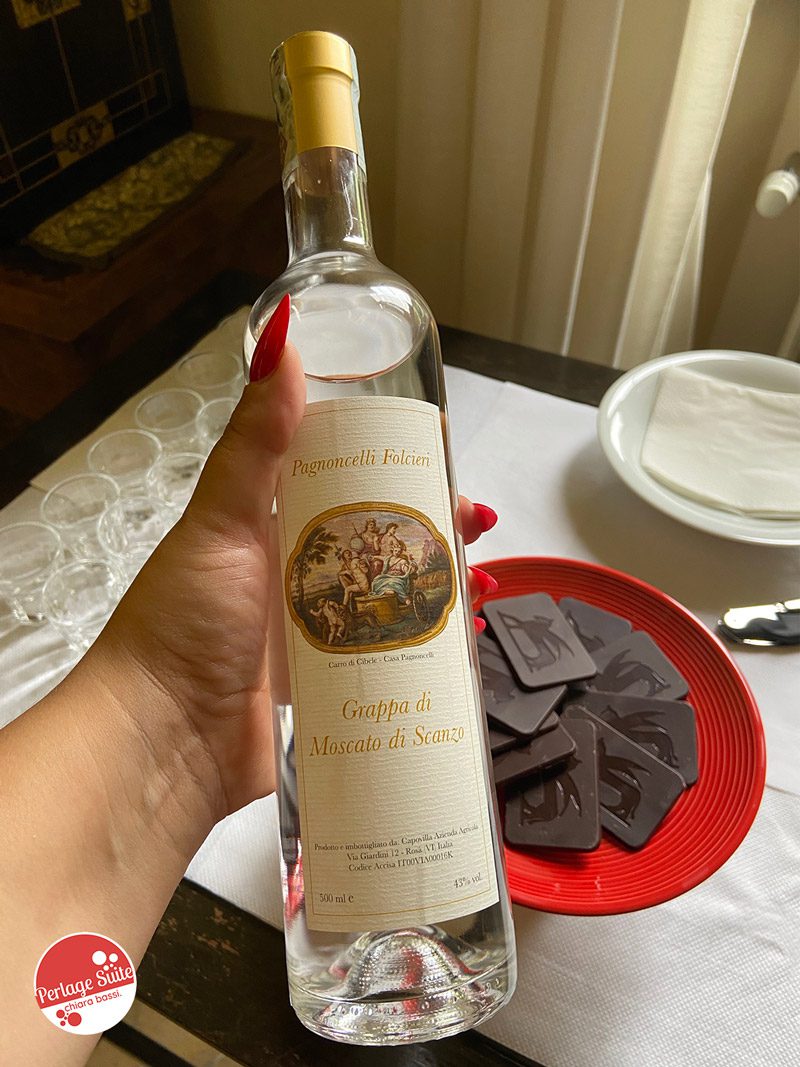During the Milan Wine Week 2020 I tasted a wine that particularly impressed me, the Moscato di Scanzo di Villa Pagnoncelli Folcieri. So I published on my Instagram profile a video as I 'pinned' him and from there my acquaintance with Francesca, heir to a chapter in the history of Italian art and viticulture, was born. We fell in love and couldn't help it. Two paths that intertwine, first in architecture and art history, then in journalism and finally in wine. Similar, different, united by a love for animals, for good and well-made things, for innovation that starts with tradition. The same week I fell in love with something tremendously close to Francesca and me: the GrandTour Collection jewels of the Borrazzi d'Eramo family, a pearl of the eternal city. A story that is incredibly similar, with the grandfather setting up a goldsmith's workshop in 1947, the second generation transforming it into an antique shop and the third synthesising the work of the grandparents and parents into a collection of jewellery capable of innovating the cameo, keeper of the most beautiful secrets in Art History. Villa Pagnoncelli Folcieri, a summer residence of the Bergamasque nobility, has 18th-century frescoes and paintings depicting myths and allegories, including the grape harvest.
Consider this parallel really just a cameo - to stay on topic - of an article I will write in a few days. I did it because For the presentation photo of this article on Instagram, I chose a shot depicting two products of great innovation and pride of Made in Italy featuring both GrandTour Collection and Villa Pagnoncelli Folcieri. For the latter, I chose an 'unconventional' photo: his beer re-fermented in the bottle with muscat must.
Moscato di Scanzo is made from the native red grape variety of the same name cultivated on a tiny area of just 31 hectares in the municipality of Scanzorosciate alone in the province of Bergamo, which has earned it the title of Italy's smallest DOCG. The limited production as well as the special production process make it a niche wine that is, however, capable of winning over enthusiasts as well as the curious.
Historically, the origin of Moscato di Scanzo is attested to around 900 B.C.. In those years, the Atestini - an early Venetian civilisation that had expanded westwards as far as the Serio river - founded the village Ros - from Greek bunch of grapes - that with the addition of the Celtic ate became Rosate and became Rosciate in turn in the early 1800s. Certainly, the name bunch of grapes was not accidental...
A curiosity: in 1850, Moscato di Scanzo was the only Italian wine quoted on the London Stock Exchange and its value was 50 guineas a barrel. The guinea was the first gold coin to be mechanically minted in 1663 and was a historic British coin that owed its name to Guinea, the state from which the gold used to mint it came. The original value was 1 pound or 20 shillings, but at that time it was worth about 30 shillings thanks to the rise of gold. Although it was replaced, in aristocratic circles - to pay for land, works of art... - it was used until 1971 and still today racehorses are valued in guineas.
Villa Pagnoncelli Folcieri: welcome to a beautiful English garden
We received a very sweet welcome from the most beautiful and sweetest blue eyes I had ever seen, a beautiful big dog accompanying the hostess, Francesca.😍🐾 We were welcomed in a well-kept English gardenintimate as a wedding favour thanks to the surrounding walls, framing a portico where it must be really splendid to have an aperitif during an event. Maybe it's because Francesco and I just got married... but I can't resist looking at every location from this point of view! 😄💕
Villa Pagnoncelli Folcieri: the reception in the frescoed hall
Francesca welcomes us into the frescoed living room and tells us the story of her family and, in particular, her wines. The villa was bought by the Pagnoncelli family in the mid-1800s, but is only in 1962 the first bottle of Moscato di Scanzo was produced by grandfather Giancarlo, a third-generation pharmacist. The vineyard, located in the best position in the DOCG, was first known as the parish priest's vineyard (and you know who got the best land back then...) and became afterwards the pharmacist's vineyard. Together with a small group of winegrowers, Giancarlo Pagnoncelli rescued and relaunched this ancient grape variety.
Villa Pagnoncelli Folcieri: do you know the IGA brewing style?
The first beer we tasted was Sirius, an IGA beer - Italian Grape Ale - with 8% yellow muscat must, 92% barley malt. I anticipate that I will write an article dedicated to this brewing style....
To produce it, a double fermentation is carried out with abbey and English yeasts, followed by blending. After a brief re-fermentation in the bottle, it is sparkling in Franciacorta. It matures about 2 months in steel and then in the bottle. Continental and American hops capable of enhancing the organoleptic characteristics of the yellow Muscat were chosen to elaborate it.
It is a beautiful intense gold colour with antique, veiled nuances. The snow-white mousse is creamy, fine and rather persistent. The nose is distinctive and immediately 'betrays' the presence of this type of must thanks to particularly characteristic aromas. Although not particularly complex on the nose, I recognise notes of yellow peach, exotic fruit, pink pepper, sage, sultanas and honey. In the mouth it is crazy thanks to a great balance between freshness, softness and acidity, sweet and bitter. The bubble is well present, but creamy and fine and particularly pleasant. Its alcohol content of 7.9%vol is not noticeable thanks to its great drinkability.
Mùscat is brewed with 10% raisin Muscat must added at the end of boiling. 90% malts: pilsner, carapils, aromatic, crystal, biscuit; hops: mosaic, citra; 3 yeasts: one English and two Belgian. Particularly interesting is that fermentation is carried out in 3 stages with 3 different yeasts to achieve greater aromatic complexity.
It has a beautiful, intense dark amber colour with a caramel, cloudy tinge. The mousse is creamy, not particularly abundant but very persistent. The nose is a fairy tale: ample with balsamic, smoky and wildflower honey notes. You can recognise the scent of caldarrhea, liquorice, cocoa and mint. In the mouth it is consistent, creamy and pleasant, just a little more fluid than you expect. Very persistent.
Villa Pagnoncelli Folcieri: a visit to the villa and cellar
Villa Pagnoncelli is truly a gem to visit because it contains wonderful frescoes, antique furniture and a tiny, jewel-like cellar. The living room, the library, the grandparents' rooms have beautiful frescoed ceilings in an impeccable state of preservation. After all, guarding an artistic heritage such as this mansion is a great responsibility that the Pagnoncelli family fulfils with impeccable dedication.
After moving to the cellar, Francesca tells us how this delicious wine is made. The vines are located in a south-facing hilly area and sink their roots into a limestone-marly rock called Sass de Luna. Although it is particularly hard and resistant, it crumbles to dust under the action of the local weathering. This phenomenon causes the soil to acquire a high mineral content and a low water reserve, making Moscato di Scanzo particularly resistant to drought, healthy and fragrant.
Harvesting takes place between the end of September and mid-October, depending on the weather. At this stage, all broken or unripe grapes are removed and the grapes are selected with great care. The withering - which lasts at least 21 days - takes place on racks or in air-conditioned and ventilated rooms to prevent the formation of mould. The health of the grapes and the ratio of sugars to acidity are checked daily. The crushing has a very low yield, less than 30% turns into wine. Fermentation with maceration of the marc as well as all processing steps take place in stainless steel tanks to preserve the primary aromas of the grape variety. The wine must mature at least 2 years in steel before being bottled.
The area reserved for ageing bottles is very small and I felt really honoured that Francesca invited me to her vertical. A vertical tasting is always a wonderful experience, but when it comes to such a limited reserve, it becomes a truly precious experience as well.
Then I couldn't resist taking a photo of Moscato di Scanzo 1985... I would love to taste it since it is the one from my year of birth. I am not sure, but I think it still has the potential to give great satisfaction... 😍
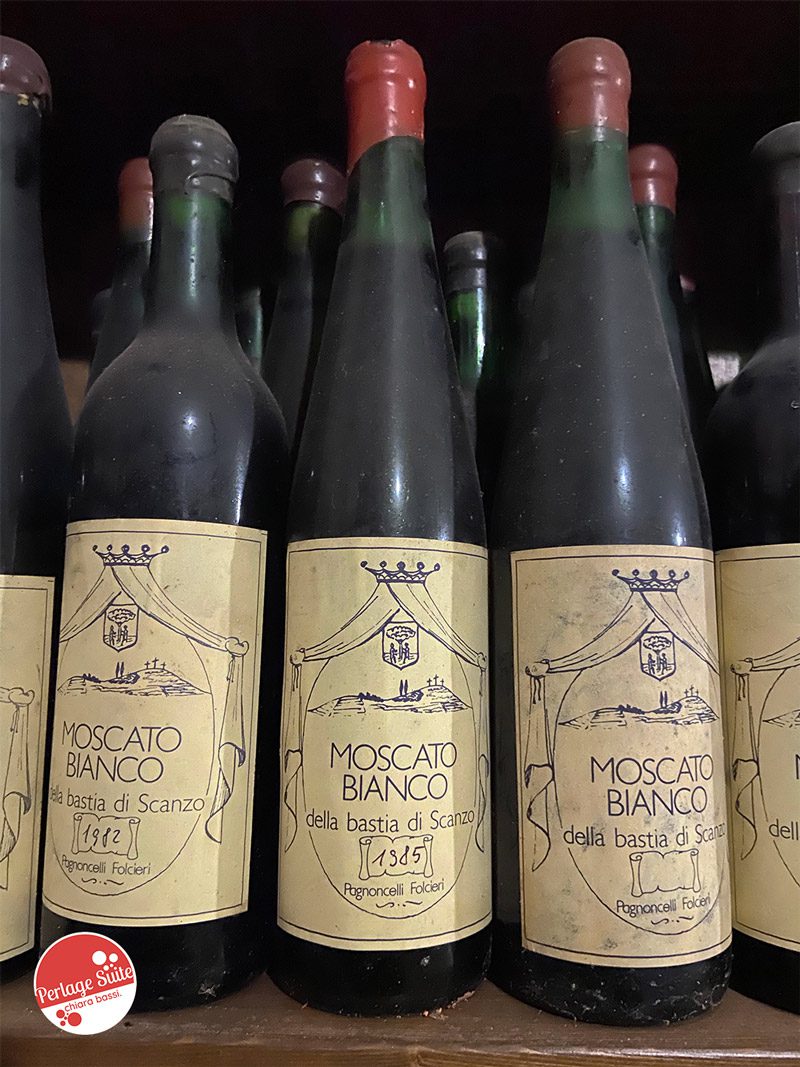
Villa Pagnoncelli Folcieri: tasting Moscato di scanzo... and more!
Red shadow | Francesca told us that it was initially produced for family consumption only... I would say that it was very fortunate that they started offering it to the public because is really good and has incredible value for money! No wonder it was a huge success and they were 'pleasantly forced' to increase production! It is made from 10% moscato and 90% merlot grapes, but the moscato is most noticeable on the nose. It has delicate aromas of roses, red fruits and black pepper. Great structure, great smoothness and a sugary accent. The merlot grapes are harvested over ripe and enhance the moscato grapes, giving it a body that makes it perfect for grilled meats, roasts, cold meats and cheeses.
Moscato di Scanzo | It is not good, it is wonderful. M E R A V I G L I O S O. A wine like Villa Pagnoncelli's Moscato di Scanzo should be at the top of those excellences of which Lombardy should be very proud. It is a beautiful intense ruby red, consistent. The nose is ample and elegant, with notes of dwarf pine, Jamaica black pepper (not to be confused with 'common' black pepper, which has hints reminiscent of cloves, but more delicate), rhubarb, Criollo chocolate, tobacco leaves, dried rose, morello cherry in spirit and cinnamon. Its strong point is its balance: the marked acidity softens its residual sugar giving it a unique pleasantness. Great structure and an almost infinite persistence make it suitable for pairing with certain 100% chocolates such as Domori's Criollo. However, I agree with Francesca: with blue cheeses and pâtés it is a mystical experience... particularly with veal pâté it was incredible! How will it go with my fish cuisine? 😍
Oh no, don't tell me Moscato di Scanzo doesn't work with fish! I won the prize as best wine blogger in Europe in 2017 food-vin pairing categoryo precisely because I like to experiment... and I usually get it right! So expect some good ones.... 😜
Grappa of Moscato di Scanzo | To me the grappa don't like it. Or rather, I only appreciate certain barricaded grappas... and yet this grappa made from Moscato di Scanzo is so good that I had a second taste. Master Distiller Vittorio Capovilla never fails... an absolute genius who manages to make even me like grappa! The distillation of the marc from the Moscato di Scanzo grapes takes place in a bain-marie in copper stills. It rests for a year in stainless steel tanks and is then diluted with spring water until it reaches an alcohol content of 43%vol. No sugar or flavourings are added. Try it with dark chocolate... or caviar... 🤤
Seeing each other again and discovering delicious combinations together, a promise!
I asked Francesca not to leave me any bottles of Moscato di Scanzo: I wanted her to bring it to me personally in Monte Isola! That's why we promised to organise a lunch or dinner for four at our house and to experimenting with fabulous wine-food pairings. My plan? To propose this wine with an all-fish menu and debunk the canonical pairings that place it between blue cheeses and dry pastries... I already have in mind the drunken octopus cooked in its red shadow... 😝
Cheers 🍷
Chiara
P.S. As always, I invite you to scroll down the page and leave me a comment here on my wine blog. Did you like this article? Have you ever visited this winery? Do you know Moscato di Scanzo? Let's talk about it together!

